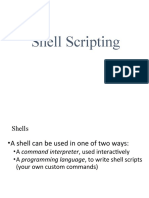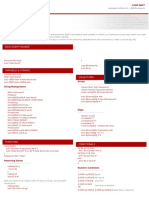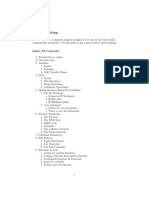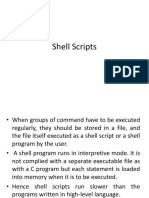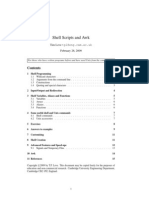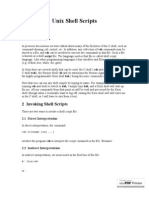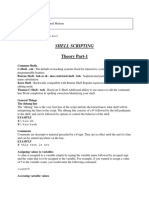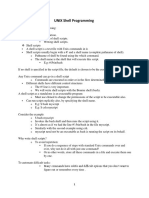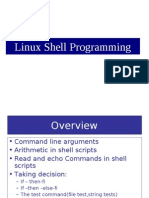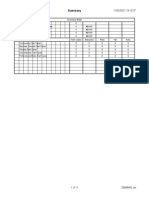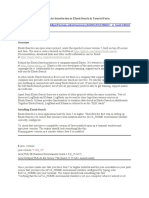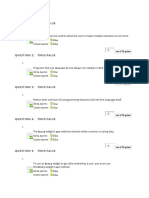0% found this document useful (0 votes)
87 views15 pagesShell Scripting for Admins
This document provides an overview of shell scripting. Key points include:
- Shell scripts allow running a list of commands sequentially like in a terminal. Variables and functions allow for more complex logic.
- Special variables like $1 provide access to command line arguments. Functions group blocks of code that can be reused.
- Control structures like if/else, for loops, and case statements allow conditionally executing blocks of code.
- Builtins like echo, printf, read, and shift provide common functionality without external programs.
- Shell scripts unlock the power of the shell as a programming language to automate tasks.
Uploaded by
api-19820505Copyright
© Attribution Non-Commercial (BY-NC)
We take content rights seriously. If you suspect this is your content, claim it here.
Available Formats
Download as PDF, TXT or read online on Scribd
0% found this document useful (0 votes)
87 views15 pagesShell Scripting for Admins
This document provides an overview of shell scripting. Key points include:
- Shell scripts allow running a list of commands sequentially like in a terminal. Variables and functions allow for more complex logic.
- Special variables like $1 provide access to command line arguments. Functions group blocks of code that can be reused.
- Control structures like if/else, for loops, and case statements allow conditionally executing blocks of code.
- Builtins like echo, printf, read, and shift provide common functionality without external programs.
- Shell scripts unlock the power of the shell as a programming language to automate tasks.
Uploaded by
api-19820505Copyright
© Attribution Non-Commercial (BY-NC)
We take content rights seriously. If you suspect this is your content, claim it here.
Available Formats
Download as PDF, TXT or read online on Scribd
/ 15



